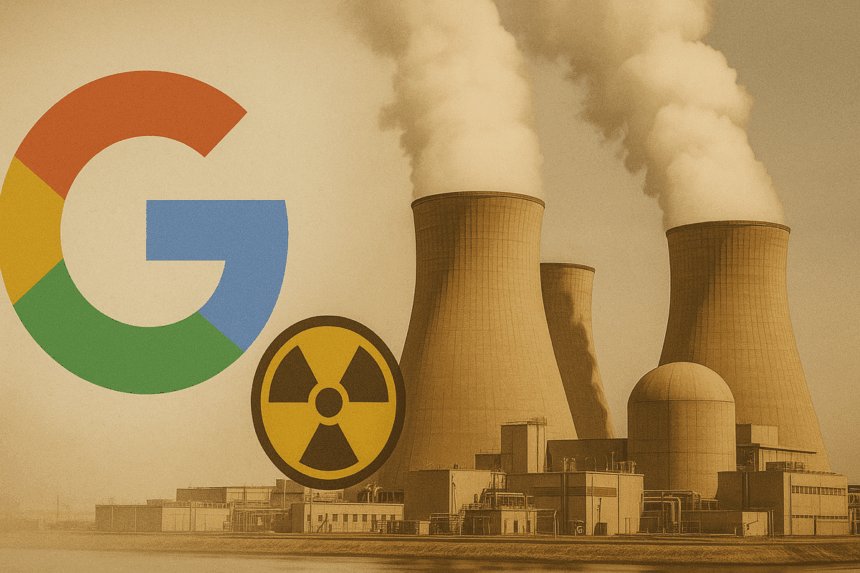Powering AI with Nuclear Energy
Google plans to back the construction of 10 new nuclear reactors to fuel its expanding AI infrastructure. The initiative is a definitive investment in energy solutions that address the massive computational needs of artificial intelligence. The project partners Google Cloud AI with Westinghouse, a nuclear company with a mixed track record. Together, they want to champion atomic power as an efficient, scalable source of clean energy that keeps AI data centers running.
What’s Happening & Why This Matters
The U.S. nuclear energy sector has experienced slow growth over the last three decades, with only three reactors being built. Two of these recent plants are located in Georgia; both constructions use Westinghouse’s AP1000 design. Unfortunately, the Georgia project ran $18 billion over budget and was seven years behind schedule. Despite federal loan guarantees, Westinghouse filed for bankruptcy in 2017, largely due to these setbacks.

Now, Westinghouse partners with Google to build 10 new AP1000 reactors. Construction is slated by 2030. The key difference: this time, AI plays a central role. Westinghouse uses Google Cloud AI technologies, including Vertex AI, Gemini, and BigQuery, to autonomously generate and optimize reactor construction plans. The goal is to create more efficient, repeatable construction processes.
Dan Sumner, Westinghouse’s interim CEO, describes the partnership as an opportunity to “accelerate deployment” while leveraging AI to “optimize construction and operations.” This comes after President Trump issued executive orders supporting the nuclear industry, breathing new life into the sector.
Related
- Amazon Data Centers to Use Nuclear Energy for Sustainability, Consumption
- Energy: Three Mile Island Nuclear Plant to Serve AI Data Centers
- Dismantled U.S. Nuclear Warheads Are Powering Next-Gen Nuclear Reactors
- Retired Power Plants Find New Purpose as Data Centers
- Germany Focused on Safe, Clean Energy Future
However, AI-driven construction of nuclear plants carries risks. Large Language Models (LLMs) like Gemini can hallucinate or generate incorrect outputs. This means Westinghouse must thoroughly verify AI-generated plans to avoid costly mistakes. Nuclear power’s reputation remains fragile, affected by past disasters: Chernobyl, Three Mile Island, and Fukushima. Mistakes here could damage public trust and curb momentum.
The tech industry’s hunger for reliable, carbon-neutral energy to power AI data centers drives these efforts. Microsoft revives the Three Mile Island plant, while Meta invests in multiple data centers for “superintelligence.” Nuclear energy offers a promising, environmentally friendly option — if the risks are managed.
TF Summary: What’s Next
Google’s collaboration with Westinghouse to develop 10 AI-powered nuclear reactors is a push towards new energy solutions amid rising AI demands. The success of this project depends on carefully balancing innovation with safety. If AI tools can streamline nuclear plant construction, the industry may overcome past challenges and power the future of AI sustainably.
All eyes are focused on AI’s combination with nuclear technology. Is this a safer, more efficient energy source? The stakes are high. Any misstep could impact public confidence and AI’s growth trajectory.
— Text-to-Speech (TTS) provided by gspeech


